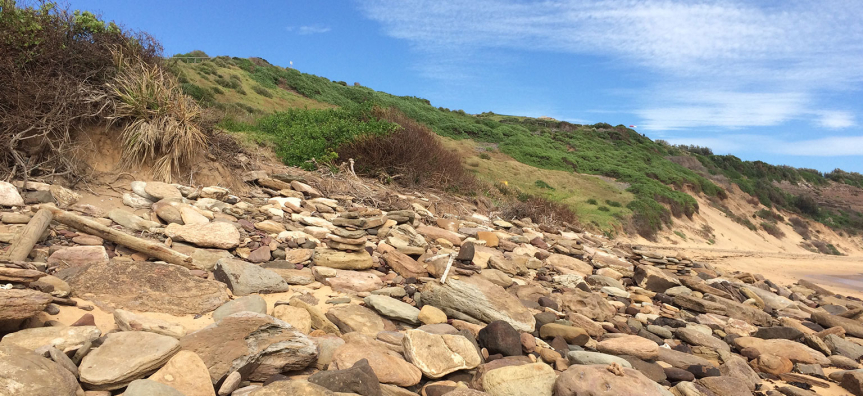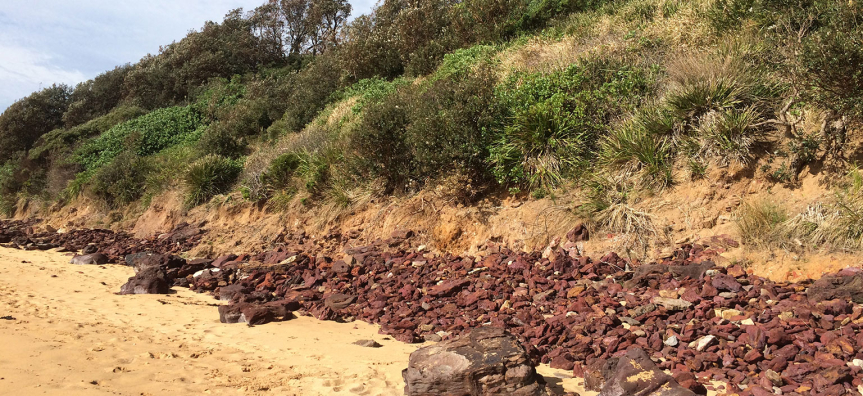Long Reef headland, also known as Griffith Park, is a unique feature of the northern beaches landscape, with a rare combination of natural, environmental, scenic, education, cultural and recreational values. The distinctive coastal headland geology, windswept cliffs, beaches and rock platforms, wetlands, heaths and open grasslands, combine to form an area of unique landscape character and quality.
Vegetation
Long Reef headland contains a complex ecosystem of wetlands, grasslands, foredune vegetation and hind-dune banksia scrubs, open woodland and a small pocket of littoral rainforest. Remnant indigenous plant species include Yellow Pittosporum (Pittosporum revolutum), Breynia (Breynia oblongifolia), Muttonwood (Rapanea variabilis), Themeda (Themeda australis), Banksia (Banksia integrifolia), Climbing Guinea Flower (Hibbertia scandens) and Native Violet (Viola hederacea).
Although these remnant vegetation communities are now modified, fragmented and simplified to varying degrees, there relatively small areas are of particular significance in terms of habitat values, biodiversity, genetic integrity, landscape character and natural heritage values. Long Reef headland contains two vegetation communities of significance, Bangalay Sand Forest and Themeda Grassland - both listed as Threatened Ecological Communities under the Biodiversity Conservation Act 2016.
Fauna
Long Reef supports coastal wetland and migratory shorebirds species and smaller birds, such as Fairy Wrens, birds of prey and grassland birds. There are approximately 49 birds species recorded on the headland that are threatened or listed on the international migratory birds agreement. The reserve supports a number of mammal and reptile species including ring tail possums, Jacky Lizards and and several frog species
Protected Areas
- Long Reef Wildlife Protection Area - comprises several threatened plants and vegetation communities and provides habitat for threatened animals. The protected area includes Fisherman's Beach, Long Reef Headland, Long Reef Golf Club, foreshore and beaches surrounding the headland and dune systems, Long Reef Beach and Dee Why Lagoon. Dogs must be on a leash at all times in this reserve and cats are not allowed here at any time.
- Long Reef Aquatic Reserve - extends from Collaroy rockpools to Long Reef Surf Lifesaving Club and from mean high water out 100m to mean low water. The reserve was declared in 1980 to protect marine invertebrates found on the rock platforms and subtidal marine plants and animals. With the exception of fin fish, collecting or harming marine plants or animals in the aquatic reserve is not allowed. Dogs are prohibited from entering the aquatic reserve and beach area at all times.



